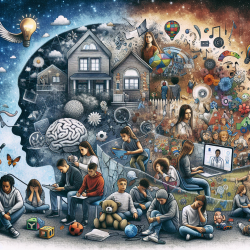Understanding the Complex Interplay of Temperament, Depression, Anxiety, and Hopelessness in Adolescents
In the realm of adolescent mental health, understanding the nuanced relationships between temperament, depression, anxiety, and hopelessness is crucial for effective intervention. A recent study titled Relationship between Temperament, Depression, Anxiety, and Hopelessness in Adolescents: A Structural Equation Model offers valuable insights that can be pivotal for practitioners aiming to enhance therapeutic outcomes.
The Study: A Deeper Dive
Conducted by Iliceto et al., the study explored the intricate associations between various affective temperaments and psychological conditions in adolescents. Utilizing a sample of 210 high school students aged 18-19, the researchers employed self-report questionnaires to assess temperament, depression, anxiety, and hopelessness.
The study proposed a two-factor model to explain these relationships:
- Unstable Cyclothymic Temperament: This factor includes Dysthymic/Cyclothymic/Anxious temperament, Irritable temperament, and Depression.
- Demoralization: Comprising Anxiety (State/Trait) and Hopelessness.
Key Findings and Implications for Practice
The study's findings underscore the importance of temperament in predicting psychiatric morbidity and suicide risk. The two-factor model revealed that depression, anxiety, and hopelessness are in a complex relationship, partly mediated by temperament.
For practitioners, these insights suggest several actionable strategies:
- Holistic Assessment: Incorporate temperament evaluations into regular assessments to identify at-risk adolescents more accurately.
- Targeted Interventions: Develop interventions that address both emotional and cognitive components of demoralization and unstable cyclothymic temperament.
- Prevention Programs: Design prevention programs that focus on managing temperament dysregulation to mitigate the risk of developing severe depressive or anxiety disorders.
Encouraging Further Research
While this study provides a robust framework, it also highlights the need for further research. Longitudinal studies could offer deeper insights into the causal relationships and the role of temperament over time. Additionally, exploring the impact of environmental factors and family dynamics on these psychological constructs could enhance our understanding and inform more comprehensive intervention strategies.
Conclusion
Understanding the interplay between temperament, depression, anxiety, and hopelessness is essential for improving adolescent mental health outcomes. By integrating these insights into practice, practitioners can develop more effective, personalized interventions that address the root causes of psychological distress in adolescents.
To read the original research paper, please follow this link: Relationship between Temperament, Depression, Anxiety, and Hopelessness in Adolescents: A Structural Equation Model.










